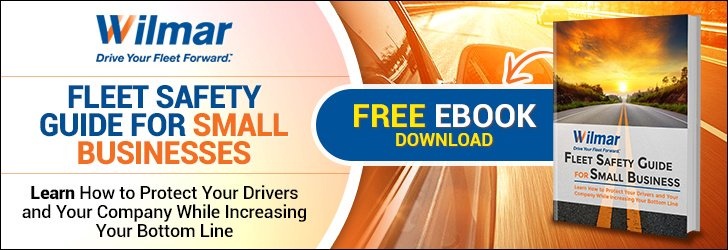
Fall is here again, and for a professional fleet driver this means a whole new set of local road challenges. School buses, crunchy leaves, and of course the unbelievably heavy rains. Depending on your region, the fall rains can be anywhere from overcast drizzles to flash floods that effect unavoidable major roadways.
No matter how many rainy seasons you've been through in the past, your entire vehicle fleet can benefit from brushing up on safe rain-driving policies both on the road and in the garage between drives.
Check and Replace Windshield Wipers
First and foremost, your entire fleet is going to need working windshield wipers. Visibility is paramount when driving in the rain, from a maddeningly thin drizzle to blinding torrents. The more smoothly your wipers can clear away the drops, the safer your drivers will be.
Make sure that all vehicle windshield wipers are in good repair and consider now a good time for annual replacements because of how useful new wipers are during the dangerous rainy season.
Don't Drive on Bald Tires
Your other major maintenance concern is tire traction. When the roads get slippery, your vehicles need every advantage they can get staying connected with the road over wet oil and deep puddles.
Most fleets don't allow their vehicle tires to become completely bald, but as it begins to rain, this is one of the most important times to have excellent traction. Particularly at the beginning of the rainy season when the rain is still washing away a summer's worth of oil and dust off the roads.
Check your vehicle tires and make sure their all-weather treads are in good condition. Replace any tires that don't pass spec and your drivers will appreciate the security during the next flash flood.
Slow Down and Increase Trip Time Estimates
There are three reasons why driving in the rain is going to make your fleet routes slower than usual. First, visibility gets worse the more raindrops you hit in sequence. Second, slippery roads make high velocities more dangerous. And finally, other drivers are going to be scared and slow down no matter how brave or skilled your fleet drivers may be.
Therefore, it's important to accept that your time estimates during the fall will lengthen. For safety's sake, remind your drivers that it's better to slow down than to slide out of control, hit something they can't see, or further terrify 'civilian' drivers. Increase your drive-time estimates and encourage all drivers to take however much time they need to be safe on the roads.
Don't Panic In Deep Puddles
Deep puddles are one of the biggest dangers during the heavy rain season because they cause hydroplaning. And you don't necessarily need a flash flood to cause dangerously deep road conditions.
Valleys between hills or even just a dip in the asphalt can create water deep enough to hydroplane if you're not careful. Many 'rain driving' tips suggest staying home or taking different routes but when you drive for business, this often isn't an option. Instead, it's best to know how to hydroplane.
First, don't panic. Don't swerve if there's no safe way to avoid the puddle and don't hit the gas or the break. Instead, maintain a safe momentum and keep your vehicle wheels pointed in the direction you want to go.
Slowing down too much may cause your vehicle to stall while speeding can result in out of control movement. Ease your foot off the gas until you reach the other side of the puddle, then continue as usual. The more calmly your drivers can perform these steps, the better.
Dealing with Scared Drivers
Finally, be prepared for the fact that other drivers are going to be frightened and slow down. The correct response is a balance between courtesy and efficiency. Driving in the rain, space cushions are more important than ever, both because of slippery roads and the spray that comes from the forward vehicle's tires.
Remind your drivers to add an extra car length or three between leading vehicles, even if they're going below the speed limit, to enhance visibility and avoid accidentally harassing other drivers. If possible, pass slower traffic politely on dryer stretches of road and create a safe space cushion before merging back in front of them.
---
The fall rains can pose some serious driving hazards and, in some regions, can be even more dangerous than the snows of winter. Make sure that your fleet vehicles and drivers are both up to the challenge this year before anyone gets hurt or badly frightened in a hydroplaning incident.
With proper planning and etiquette (and remembering to pad your drive-time estimates), your team will do just fine. For more business fleet management tips, contact us today!







